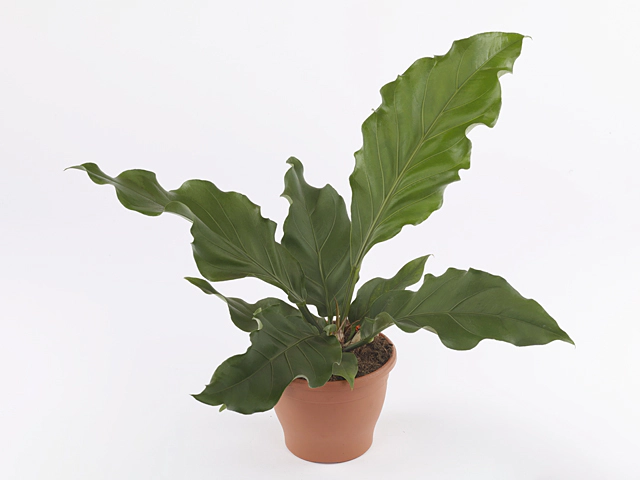Anthurium not flowering crassinervium Karma Birdnest

| Leaf tip | Pointed/acute |
| Leaf margin | Undulate; Entire |
| Leaf, general shape | Elongate |
| Leaf, scent | Unscented |
| Plant height | 30 - 40 cm |
| Leaf width | 10 - 15 cm |
| Leaf surface | Glossy; Smooth |
| Leaf size | 30 - 40 cm |
| Leaf, main color | Green-dark green-137A |
| Leaf colour, pattern | Unicolored |
The Anthurium Crassinervium, also known as the Karma Birdnest or Flamingo Plant, is a popular ornamental plant known for its beautiful foliage and vibrant blooms. However, many gardeners may encounter the issue of their Anthurium not flowering. In this article, we will explore possible reasons for this and provide some tips to promote blooming in your Anthurium Crassinervium.
One significant factor to consider when your Anthurium is not flowering is its light exposure. These plants thrive in bright, indirect light, which is essential for their blooming process. If your Anthurium is placed in a dimly lit area or receiving direct sunlight, it may impact its ability to produce flowers. Try relocating your plant to a spot with bright, indirect light and observe any changes in its blooming pattern.
Another crucial aspect to consider is the plant's age. Anthuriums typically take a few years to mature and start producing flowers. Younger plants may focus more on foliage growth and establishing their root system before diverting energy towards blooming. Therefore, patience is key, and it's essential to give your Anthurium time to reach maturity.
Proper fertilization is also essential for encouraging Anthurium blooming. These plants benefit from a balanced fertilizer high in phosphorus, as this nutrient promotes flower production. Ensure you are using a fertilizer formulated specifically for Anthuriums and follow the instructions for application carefully. Overfertilizing can lead to salt buildup in the soil, which can harm the plant. A general rule of thumb is to fertilize once a month during the growing season and reduce frequency during the dormant period.
In addition to light and fertilization, proper watering and humidity levels play a crucial role in the Anthurium's flowering habits. These plants prefer consistently moist soil but are susceptible to root rot if overwatered. Allow the top inch of soil to dry out before watering again. Additionally, Anthuriums thrive in humid environments, mimicking their native tropical habitats. Consider using a pebble tray or a humidifier to increase humidity levels around your plant.
Inspecting the health of your Anthurium Crassinervium is also crucial to determine any potential issues affecting flowering. Check for pests, such as spider mites or aphids, which can harm the plant and impact its ability to bloom. If you notice any signs of pest infestation, treat the plant promptly with an appropriate insecticide or try natural methods like neem oil or insecticidal soap.
Lastly, it's essential to remember that Anthuriums have their own blooming cycles, which can vary depending on the individual plant. Some varieties may have shorter blooming periods, while others may bloom year-round. Understanding the natural blooming habits of your specific Anthurium Crassinervium can help manage expectations and avoid unnecessary concerns when it's not in bloom.
In conclusion, if your Anthurium Crassinervium is not flowering, consider factors such as light exposure, plant maturity, fertilization, watering, humidity levels, and pest control. By addressing these key aspects, you can encourage your Anthurium to produce beautiful, long-lasting blooms, enhancing the overall beauty of this stunning tropical plant.